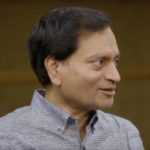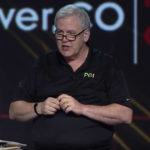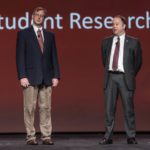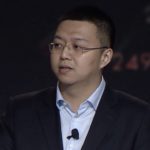In this video from SC17, Dan McGuan and Jon Masters from Red Hat describe the company’s Multi-Architecture HPC capabilities. “At SC17, you will have an opportunity to see the power and flexibility of Red Hat Enterprise Linux across multiple architectures, including Arm v8-A, x86_64 and IBM POWER Little Endian.”
Dr. Pradeep Dubey on AI & The Virtuous Cycle of Compute
“Deep Learning was recently scaled to obtain 15PF performance on the Cori supercomputer at NERSC. Cori Phase II features over 9600 KNL processors. It can significantly impact how we do computing and what computing can do for us. In this podcast, I will discuss some of the application-level opportunities and system-level challenges that lie at the heart of this intersection of traditional high performance computing with emerging data-intensive computing.”
Video: Dell EMC AI Vision & Strategy
Jay Boisseau from Dell EMC gave this talk at SC17 in Denver. “Across every industry, organizations are moving aggressively to adopt AI | ML | DL tools and frameworks to help them become more effective in leveraging data and analytics to power their key business and operational use cases. To help our clients exploit the business and operational benefits of AI | ML | DL, Dell EMC has created “Ready Bundles” that are designed to simplify the configuration, deployment and management of AI | ML | DL solutions.”
Harp-DAAL: A Next Generation Platform for High Performance Machine Learning on HPC-Cloud
Judy Qiu from Indiana University gave this Invited Talk at SC17. “Our research has concentrated on runtime and data management to support HPC-ABDS. This is illustrated by our open source software Harp, a plug-in for native Apache Hadoop, which has a convenient science interface, high performance communication, and can invoke Intel’s Data Analytics Acceleration Library (DAAL). We are building a scalable parallel Machine Learning library that includes routines in Apache Mahout, MLlib, and others built in an NSF funded collaboration.”
Michael Wolfe Presents: Why Iteration Space Tiling?
In this Invited Talk from SC17, Michael Wolfe from NVIDIA presents: Why Iteration Space Tiling? The talk is based on his noted paper, which won the SC17 Test of Time Award. “Tiling is well-known and has been included in many compilers and code transformation systems. The talk will explore the basic contribution of the SC1989 paper to the current state of iteration space tiling.”
Video: Taking the Nanoscale to the Exascale
Theresa Windus from Iowa State University gave this Invited Talk at SC17. “This talk will focus on the challenges that computational chemistry faces in taking the equations that model the very small (molecules and the reactions they undergo) to efficient and scalable implementations on the very large computers of today and tomorrow. In particular, how do we take advantage of the newest architectures while preparing for the next generation of computers? “
SC17 Awards Ceremony and Conference Recap
In this video from SC17, Jeff Hollingsworth and Paul Hovland host the Conference Finale Event announcing the winners of the Best Paper, Best Poster, ACM Gordon Bell Prize, Student Cluster Challenge and other honors for our technical program. “The conference drew 12,753 attendees and featured a technical program spanning six days – marking the second largest SC conference of all time.”
First Global Survey of Energy and Power Aware Job Scheduling and Resource Management
In this special guest feature, Siddhartha Jana summarizes the key findings of the first-of-its-kind survey on Energy and Power Aware Job Scheduling and Resource Management. “The goal of this year-long survey was to investigate the active investments by HPC centers in enabling energy and power management within their software stack, especially the job schedulers and resource managers.”
Lessons on Integrating and Utilizing 10 Million Cores: Experience of Sunway TaihuLight
Haohuan Fu gave this Invited Talk at SC17 in Denver. “The Sunway TaihuLight supercomputer is the world’s first system with a peak performance greater than 100 PFlops and a parallel scale of over 10 million cores. Different from other existing heterogeneous supercomputers, the system adopts its unique design strategies in both the architecture of its 260-core Shenwei CPU and its way of integrating 40,960 such CPUs as 40 powerful cabinets. This talk will first introduce and discuss design philosophy about the approach to integrate these 10 million cores, at both the processor and the system level.”













